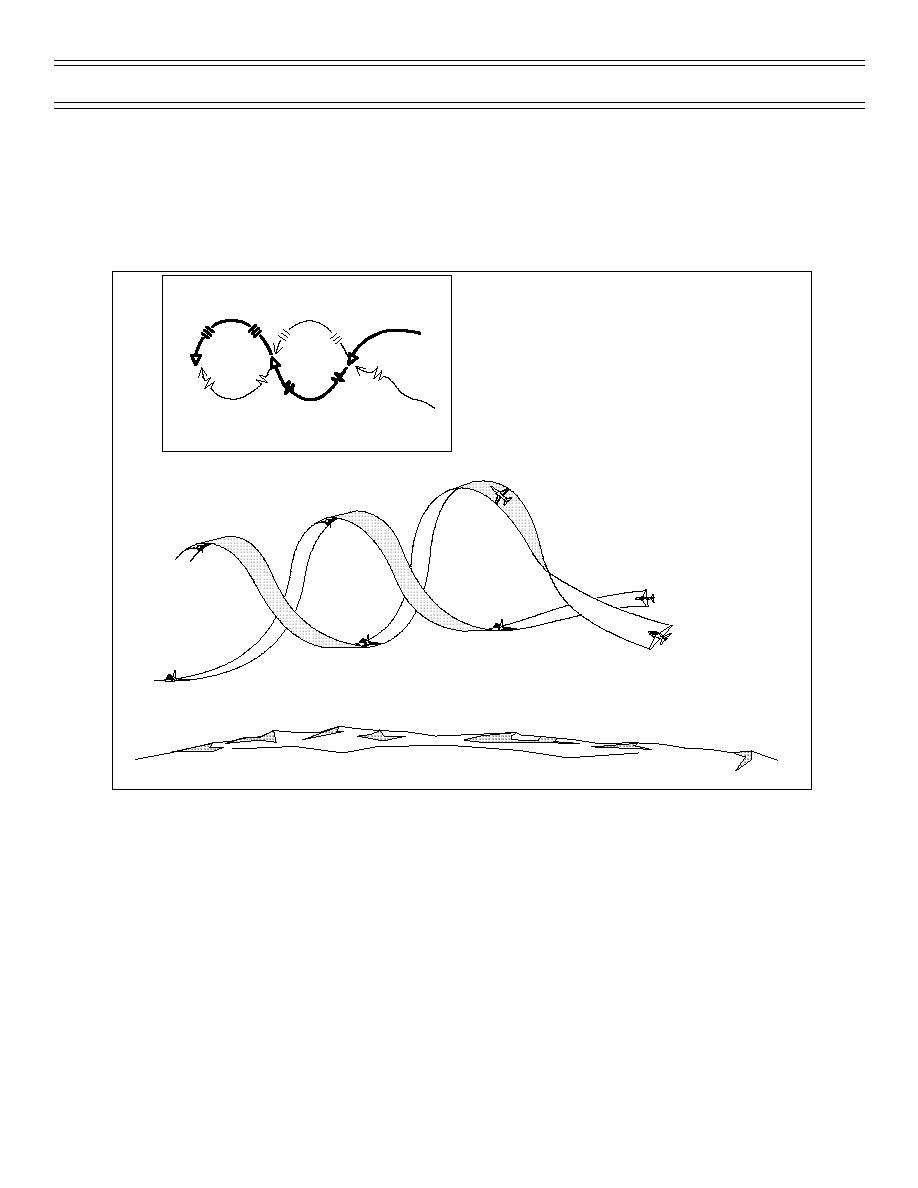
Flight Procedures
Air Combat Maneuvering
ROLLING SCISSORS
The rolling scissors Figure 15, results from an in-close, vertical overshoot, and is usually a product of a
successful counter to a BRA. The scissors develops into a series of horizontal and vertical overshoots.
Again, as in the horizontal scissors if you find yourself in a “roller,” you have made a mistake, which means
you must strive to remain offensive or disengage at the earliest opportunity. A rolling scissors is not a
desirable maneuver for an attacker because it limits opportunities for weapons employment.
1
2
4
3
3
4
2
1
2
3
4
1
Defender
2
1
3
Attacker
4
Figure 15: ROLLING SCISSORS
To practice this maneuver, set up by executing a BRA from a medium-angle perch. As you start your
conversion over the top of the barrel roll, the bogey hard turns into you to create a horizontal overshoot.
Before you can adjust for the horizontal overshoot, the bogey will pull up to create a vertical overshoot as
he performs a BRA against you. Continue your barrel roll and place your lift vector on the bogey. Once
your lift vector is on the bogey, pull 17 units AOA until wings level on the bottom. As your nose
approaches approximately 10 degrees below the horizon, pull wings-level into the vertical. Then continue
your pitch up 40 to 60 degrees (depending on your energy state) using 17 units AOA. Once you establish
your nose in the vertical, roll toward the bogey to place your lift vector on him.
The aircraft will continue to climb as you roll off the vertical, which will assist in gaining the proper vertical
separation. The bogey then overshoots vertically and both of you are locked in a series of vertical and
horizontal overshoots.
Your goal is to execute the scissors perfectly and capitalize on any mistake the bogey makes. To stay
offensive in a rolling scissors use the three-dimensional environment to control your energy effectively by
1) pulling up wings level into the vertical, 2) making your heading changes by rolling off after you reach the
T-45C Revision 1
Page 23


 Previous Page
Previous Page
